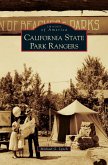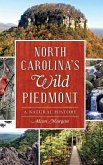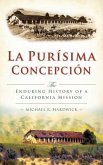The first comprehensive source of information about one of the Great Basin's most vital plant families and its role in the ecology of the region. Among the plant species of the Great Basin rangeland, the Purshia -- ancient members of the rose family evolved to survive the aridity and temperature extremes of this harsh region -- are one of the most important. In this first book-length study of this key plant species, range scientists James A. Young and Charlie D. Clements offer a comprehensive examination of the biology of the Purshia and their significant role in the ecology of the Great Basin. The authors' discussion is both thorough and broad in scope. They cover the evolution and probable origins of the Purshia (antelope bitterbrush, desert bitterbrush, and cliffrose); the history of their recognition as an important component of the rangeland forage supply for both wild and domesticated animals; the characteristics of the various Purshia plant communities; the ecophysiology of the species, including seed production and the effects of wildfire; the physiology of seeds, the process of germination, and procedures for artificially seeding Purshia to replace natural populations depleted by overgrazing or wildfires; the role of granivores (seed-eating animals, birds, and insects) in the dispersal of Purshia; the role of Purshia in the nutrition of mule deer and domestic livestock; the impact of insects, plant diseases, and wildfire on Purshia species; soil requirements; and the role of Purshia in successful range management. As understanding of the complexity of the rangeland ecological community has grown, so has appreciation for the role of the Purshia within that community.Purshia: The Wild and Bitter Roses offers an informative and thought-provoking survey of a key rangeland plant species with practical application for wildlife and rangeland management, land-use planners, ecosystem analysis, wildlife interest groups, environmentally concerned cit
Hinweis: Dieser Artikel kann nur an eine deutsche Lieferadresse ausgeliefert werden.
Hinweis: Dieser Artikel kann nur an eine deutsche Lieferadresse ausgeliefert werden.








